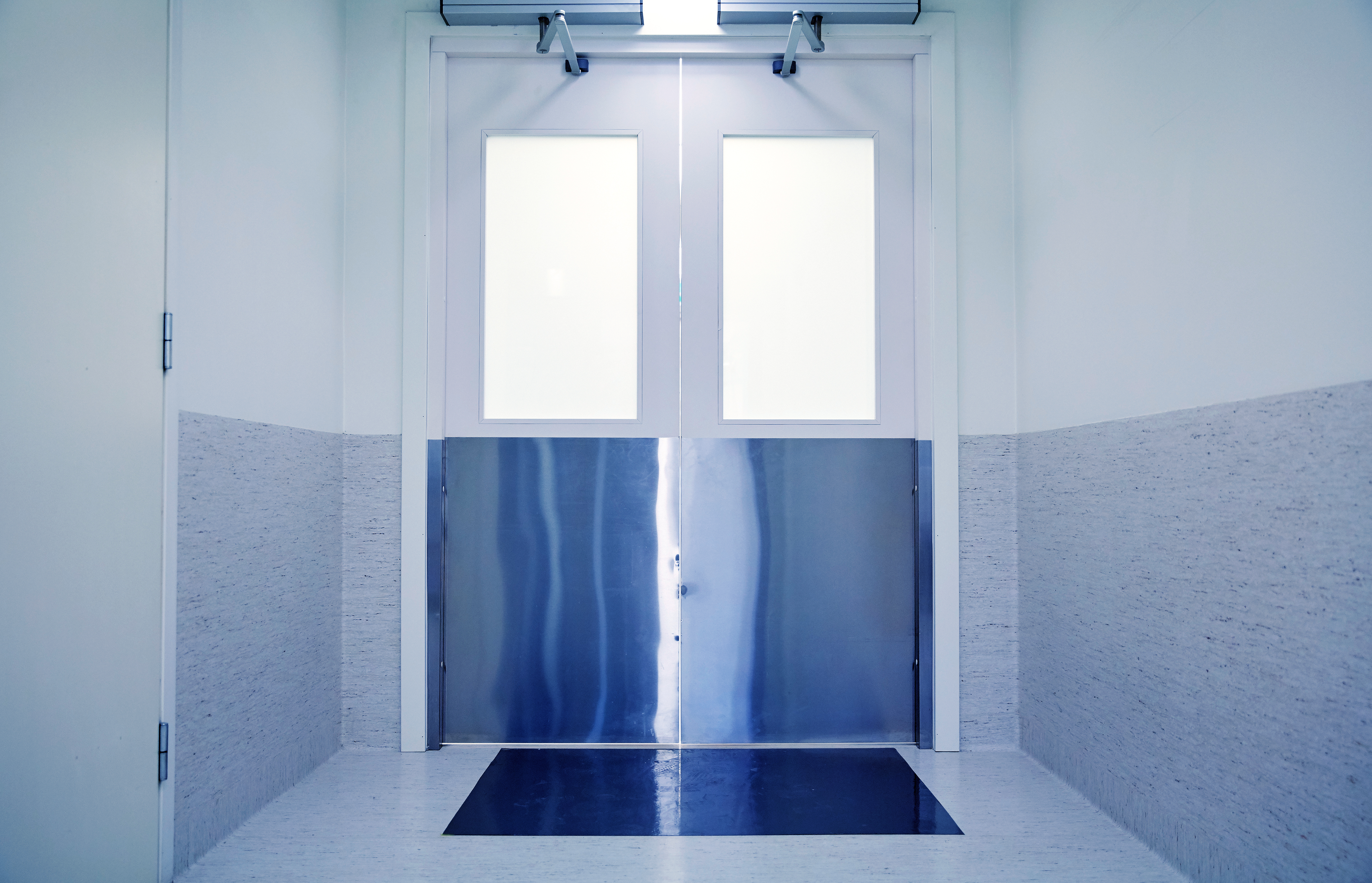What are the safety elements installed in automatic doors?

To ensure high levels of convenience and security, there is a range of automatic door safety requirements that any automatic doors have to meet when installing on commercial properties. They increase accessibility for employees and customers alike and make commercial premises more attractive and easier to use. Because automatic doors are used by members of the public, they need to be safe and reliable.
In the UK, the safe operation of automatic doors in commercial premises is maintained by adherence to British Safety Standards.
What are the British Safety Standards for automatic doors?
Compliance with British Standards is a key legal requirement for automatic doors in commercial premises in the UK. The relevant standard for automatic pedestrian doors is BS EN 16005, which sets out the automatic door safety requirements in commercial premises.
The standard ensures the safe operation of automatic doors for employees and customers and specifies a range of safety features and performance criteria that doors must meet. These include clearances to prevent entrapment, force limitation to avoid injury, safety sensors to detect people or objects in the door's path, an emergency stop button, and clear signage. The door must also be designed to withstand frequent use and remain safe and reliable over its lifetime.
Testing and certification must take place to confirm that doors are operating in accordance with automatic door safety requirements in line with British Safety Standards.
Sensors & Stop Buttons
Two key automatic safety door requirements are for the installation of functioning sensors and stop buttons. These help to reduce the risk of an accident being caused by the opening and closing of the door.
Sensors detect the presence of people or objects in the door's path and prevent the door from closing on them, which can cause serious injury or damage. There are several types of safety sensors used in automatic doors, including infrared sensors, microwave sensors, and safety mats. They must be located in a way that ensures they cover the entire area of the door's opening, including any areas where people or objects may be obscured from view.
Stop buttons allow the door to be stopped quickly in case of an emergency, such as someone getting caught in the door or an unexpected obstacle in the door's path. When the button is pressed, the door should stop immediately. The stop button should be clearly visible and marked by appropriate signage.
Other signage should clearly indicate the presence of automatic doors as well as their direction of travel.
Automatic Door Safety Maintenance & Testing from Safetell
Safetell can ensure that your installation meets all of the relevant automatic door safety requirements. As well as inspecting your installation to confirm that it has been installed with the correct clearances and force limitations in place, we can also ensure your sensors and other safety elements are performing as required.
Our automatic door service, which includes automatic door maintenance, not only ensures that your doors are safe, they also reduce the risk of costly and inconvenient downtime. With our ‘repair not replace’ ethic, we won’t sell you expensive products you don’t need.
Contact our team to ensure your doors are kept safe, well-maintained and reliable.
.png?width=3047&height=647&name=Safetell%20Master%20Logo%20CMYK%20(1).png)

